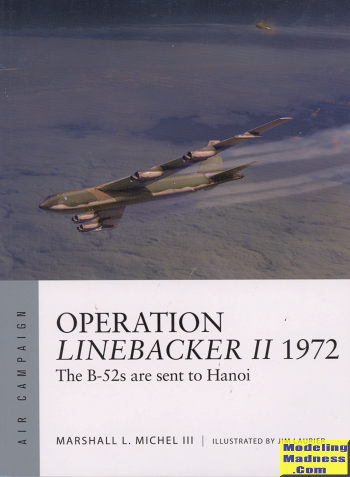 December 26,
1972 is a date that should stick in the mind of many Americans. On this date
those at Andersen AFB in Guam witnessed the start of what was probably the last
mass heavy bomber raid in history. On that date, 72 B-52s took off for Hanoi in
what was then North Vietnam. An event that undoubtedly was the impetus that got
the US out of the war in Vietnam.
December 26,
1972 is a date that should stick in the mind of many Americans. On this date
those at Andersen AFB in Guam witnessed the start of what was probably the last
mass heavy bomber raid in history. On that date, 72 B-52s took off for Hanoi in
what was then North Vietnam. An event that undoubtedly was the impetus that got
the US out of the war in Vietnam.
In the year prior to this, the North Vietnamese and the
Americans had been meeting in Paris in an attempt to find a reason for the US to
bail out of the war. Among the demands were the removal of all North Vietnamese
troops out of South Vietnam and the willingness of North Vietnam to recognize
the government in the south and not attack.
At one time, things looked very promising, but the
regime in the South refused to sign off on it. Talks broke off in October 1972
and it seemed that nothing would be accomplished.
President Nixon was somewhat desperate to get a deal as
he knew that Congress would not continue to fund the war when they came to
session in January of 1973. It was then that the suggestion was made to bomb the
North Vietnamese back to the table.
The B-52 was probably the most feared weapon in the US
arsenal. It had been used against targets in South Vietnam for a long time and
some had also been used against the North in Linebacker I. However, in the
years, the number of available planes had been steadily decreasing and they were
the main part of the nuclear triad so could not sustain any sort of losses
against SAM missiles. In addition, the G model planes were not equipped to carry
a large load of iron bombs like the B-52Ds. In fact the D could carry the
ordnance of three G models. Add to it that the G model did not have as good a
jamming suite as the modified D models.
On the North Vietnamese side, a considerable play book
had been written on how to defeat the B-52s. There was a set sequence of events
prior to a raid that the North Vietnamese knew quite well and this allowed them
to anticipate events.
Once the OK for Linebacker II was given, it turned into
a real mess. SAC demanded that mission planning happen in Omaha, thousands of
miles from the battle zone. They also put forth tactics that were met with
raised eyebrows and looks of disbelief from commanders and crews in the field.
The initial raids turned out to be something of a disaster as each resulted in
the loss of aircraft that SAC could ill afford to lose; most of them the newer G
models.
Without spoiling what is a super read, the authors have
done considerable research into the subject and in the course of their studies,
have uncovered quite a few areas where SAC or commanders simply screwed up and
cost the service aircraft and crews. Full of great period photos as well as some
very inspiring illustrations, this is THE book to have on the subject if you
want to understand the events of Linebacker II and how it affected the outcome
of the war. Very highly recommended.
October 2018
Copyright ModelingMadness.com. All rights reserved.
For more on the complete line of Osprey books,
visit www.ospreypublishing.com .
If you would like your product reviewed fairly and quickly, please
contact
me or see other details in the
Note to
Contributors.
 December 26,
1972 is a date that should stick in the mind of many Americans. On this date
those at Andersen AFB in Guam witnessed the start of what was probably the last
mass heavy bomber raid in history. On that date, 72 B-52s took off for Hanoi in
what was then North Vietnam. An event that undoubtedly was the impetus that got
the US out of the war in Vietnam.
December 26,
1972 is a date that should stick in the mind of many Americans. On this date
those at Andersen AFB in Guam witnessed the start of what was probably the last
mass heavy bomber raid in history. On that date, 72 B-52s took off for Hanoi in
what was then North Vietnam. An event that undoubtedly was the impetus that got
the US out of the war in Vietnam.